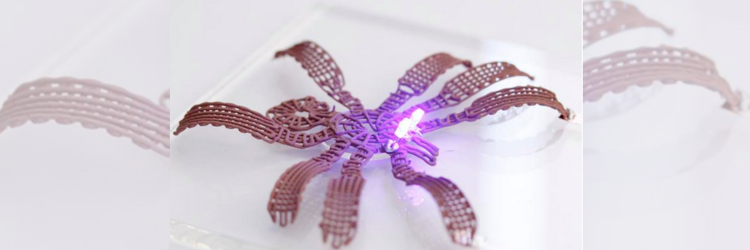A Highly Conductive Metallic Gel for 3D Printing
There’s now a metallic gel that is highly conductive and can be used to print three-dimensional (3D) solid objects at room temperature—in a single step. This potentially opens up the ability to manufacture a wide range of electronic components and devices.
The researchers started with a solution of micron-scale copper particles suspended in water and added a small amount of an indium-gallium alloy—liquid metal at room temperature. As the mixture is stirred, the liquid metal and copper particles stick together, forming a metallic gel “network” within the solution.
The gel-like consistency means the material has a fairly uniform distribution of copper particles. The network of particles connects to form electrical pathways, and the copper particles aren’t settling out of the solution and clogging the printer.
The gel uses a conventional 3D printing nozzle and retains its shape when printed. When dried at room temperature, the 3D object becomes even more solid while maintaining its shape.
The team found that the alignment of the particles influences how the material dries. If printing a cylindrical object, the sides would contract more than the top and bottom as it dries. If something is drying at room temperature, the process is sufficiently slow that it doesn’t create structural change in the object. However, if you add heat, rapid drying can cause structural deformation. As the deformation is predictable, you can make an object change shape after printed by controlling the pattern of the printed object and the amount of heat it is exposed to while drying.
The team is open to working with industry partners to explore potential applications.
The paper “Metallic Gels for Conductive 3D and 4D Printing,” was published in the journal Matter.

